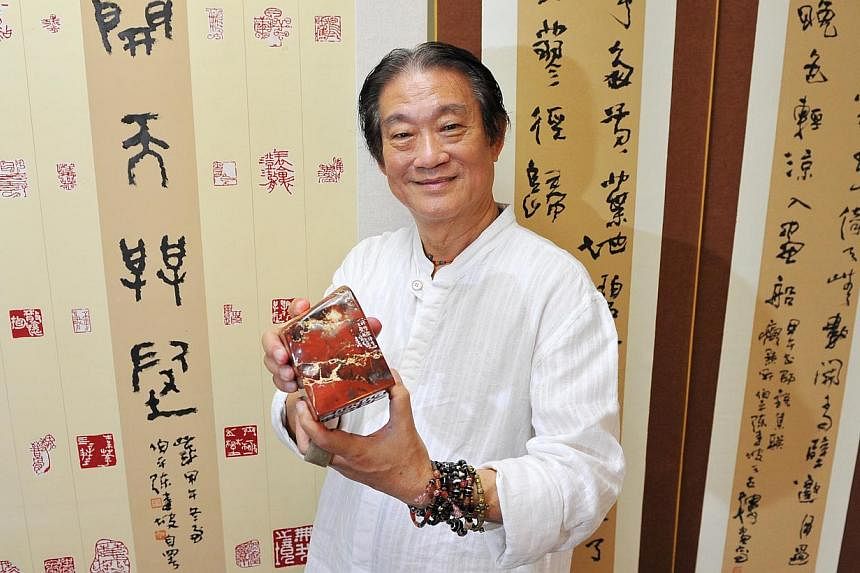Singapore Chinese ink painter, calligrapher and seal carver Tan Kian Por is showing seal carvings, or zhuanke, he carved on stones found in Kluang, Johor, for the first time in his new show.
All the Cultural Medallion recipient's 108 works in zhuanshu (a special script for seal carvings) of beautiful and auspicous Chinese characters, words of wisdom and quotes from a young Singaporean poet, were done on the Malaysia-mined stone called nanshanshi or stones from the southern mountain.
Stones used in Chinese seal carvings usually come from China, with the most popular variety being shoushanshi from Fuzhou, the capital city of Fujian province.
Other popular ones include qingtianshi and canghuashi from Zhejiang province, and balinshi from Mongolia.
"I stumbled upon the stones from Kluang a few years ago when a stone collector there invited me to try using them for my seals," says Tan, a secondgeneration Singapore artist who graduated from the Nanyang Academy of Fine Arts in 1970.
To his surprise, he discovered that the stones are as good and colourful as shoushanshi, with their hardness easy on the knife as well.
He began looking for alternatives when the prices of the stones from China started going up, says Tan, 67, whose wife is a Chinese ink painter. They have two grown-up children.
He says that the tianhuangshi from Fuzhou were said to be worth three times the price of gold even in ancient times.
Now they are so rare and expensive that few can afford to carve their works on the precious stones.
Tan was commissioned by the Monetary Authority of Singapore (MAS) to carve a seal for its then chairman Goh Chok Tong - the former Singapore prime minister, who is now Emeritus Senior Minister - to be used on banknotes in 2005.
Two years ago, MAS asked him to carve another seal for its current chairman, Deputy Prime Minister and Finance Minister Tharman Shanmugaratnam, for a similar purpose.
One unusual feature of the exhibition is the stones which bear the words of local poet Tan Xi Zhe. The artist says seal carvings usually use memorable verses or words from famous Chinese poets or writers.
"I read Xi Zhe's poetry on her Facebook page and found it interesting and so decided to cast her poems in stone," says Tan, whose last seal carving exhibition was held three years ago.
His seal carvings also break with convention in that they come in all shapes and sizes. He has even done away with the squarish or rectangular outlines commonly seen in traditional seals.
Tan says: "I am an advocate for seal carving to stand alone as an art form, not as part of a Chinese ink painting or a piece of calligraphy work in the form of stamps bearing the names of the artists.
"They should be works of art in themselves and so seal carvers must therefore make an effort to source for beautiful and colourful textures on the stones and select those with unusual shapes and sizes to make them stand out."

